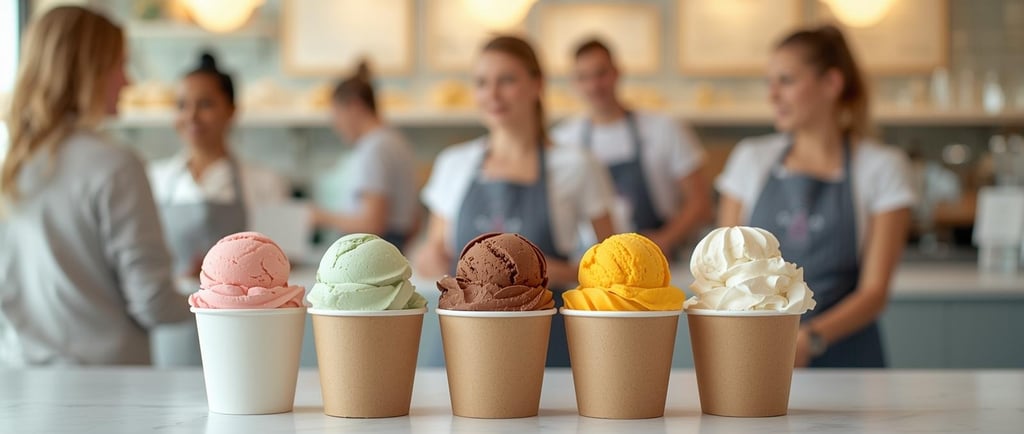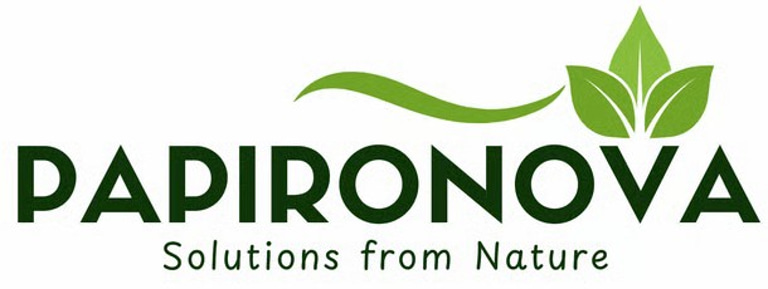Why Plastic-Free Cups Matter & Why the Future Belongs to Paper
At Papiernova, we are committed to providing sustainable paper products that meet modern demands. Discover how our innovative approach connects global suppliers and customers who prioritize environmentally responsible choices in paper and packaging, reducing the overall environmental impact.
5/8/20242 min read


Why Plastic-Free Cups Matter — And Why the Future Belongs to Paper
Every day, millions of people enjoy a coffee on the way to work, grab a tea between meetings, share ice cream with friends, or pick up a warm noodle bowl to go.
These moments feel simple and ordinary — but the packaging behind them has a much bigger story.
For decades, most cups used for coffee, tea, ice cream, soups, and takeaway bowls were lined with a thin layer of plastic. You can’t see it, but it’s there: a hidden film that keeps liquids from leaking.
The problem?
Plastic-lined cups are extremely difficult to recycle, often end up in landfills, and contribute to long-lasting microplastic pollution.
Today, the world is waking up to the idea that even small, everyday items need a smarter, cleaner design.
And this is where plastic-free cupstock makes all the difference.
What’s Wrong with Traditional Cups?
A classic “paper cup” is not really just paper.
It’s paper + plastic fused together, which means:
1. They are rarely recyclable.
Most recycling plants can’t separate plastic from paper, so the cup becomes waste.
2. They break down into microplastics.
These particles spread through soil, water, oceans — and even the food chain.
3. “Bioplastic” cups aren’t a perfect solution either.
PLA needs industrial composting to degrade; without it, PLA behaves almost like conventional plastic.
For an item we use for only a few minutes, the long-term impact is huge.
The Better Alternative: Plastic-Free Cupstock
Thanks to innovations in water-based barrier technology, we now have cup materials that:
contain no PE, no PLA, no fluorinated chemicals,
resist water, heat, oils, and fats,
and still feel and perform like a traditional cup.
The big difference?
They can be recycled directly with normal paper — no special process needed.
This means:
no microplastics
no toxic residues
easier recycling
lower environmental footprint
In simple terms:
A cup that protects the planet, not just the drink.
Strong Enough for Every Use — From Coffee to Noodles
Plastic-free cupstock isn’t a compromise. It matches — and often exceeds — the performance of plastic-lined cups in:
Hot drinks (coffee, tea, hot chocolate)
Strong, safe, and keeps shape under heat.
Cold or frozen foods (ice cream, smoothies, milkshakes)
Excellent oil and moisture resistance.
Hot foods (noodle bowls, soups)
Leak-proof, heat-sealable, and durable.
Everyday takeaway packaging
Better printability and more premium branding options.
Whatever the product, plastic-free cupstock delivers the reliability businesses need — with sustainability customers appreciate.
Why Brands and Cafés Are Making the Change
Today’s consumers don’t just look at what they buy — they look at what it comes in.
Switching to plastic-free cups helps brands:
strengthen sustainability values
meet growing EU & global regulations
reduce long-term waste costs
stand out with eco-smart packaging
create a stronger emotional connection with customers
Holding a plastic-free cup feels different.
It sends a message:
“We care about the drink — and the world it’s enjoyed in.”
A Small Choice That Creates a Big Impact
Replacing a plastic-lined cup with a plastic-free one may seem small.
But when multiplied across cafés, restaurants, hotels, office buildings, airlines, cinemas, and food brands — the impact is massive.
One switch.
Millions of better cups.
Billions fewer microplastics.
A transition toward cleaner oceans, healthier communities, and a circular economy where paper truly returns to paper.
The Future of Cups Is Clear
The future we need is simple:
Paper over plastic.
Recyclable over complicated.
Sustainable over disposable.
Plastic-free cupstock is not just a new material — it is a new way of thinking about packaging: practical, responsible, and built for the world we want to live in.
Sustainability
Eco-friendly paper solutions for modern needs.
Connect
Trade
Office@innovestik.com
+4369910300004
© 2024. All rights reserved.
